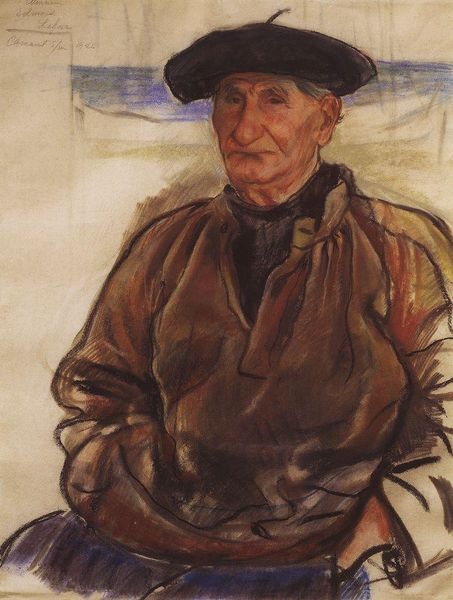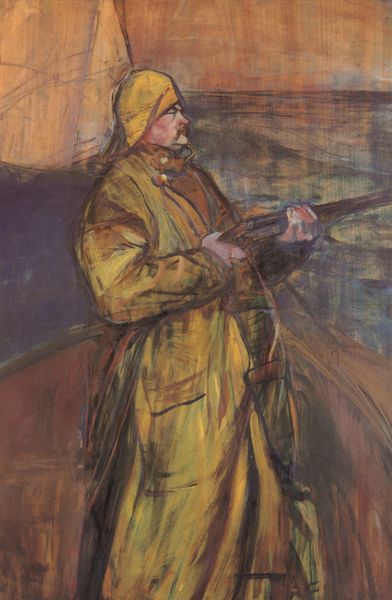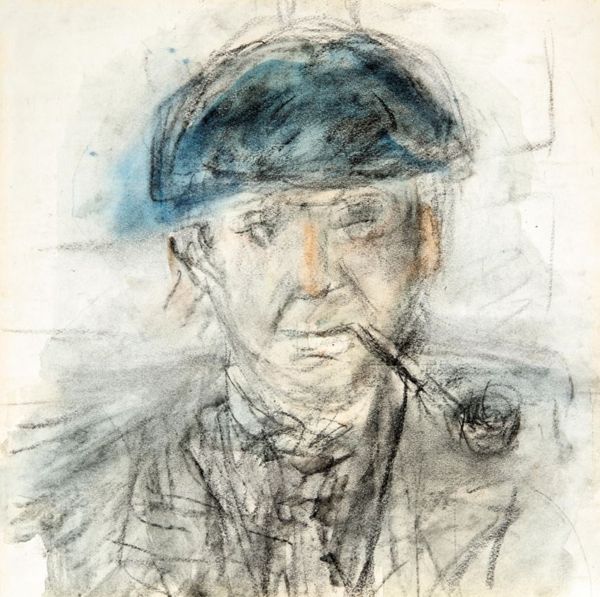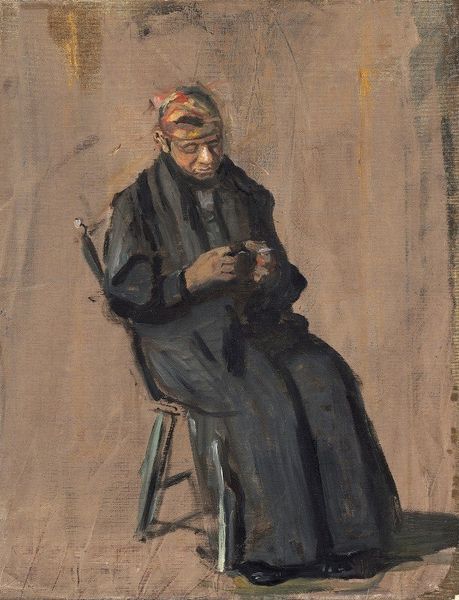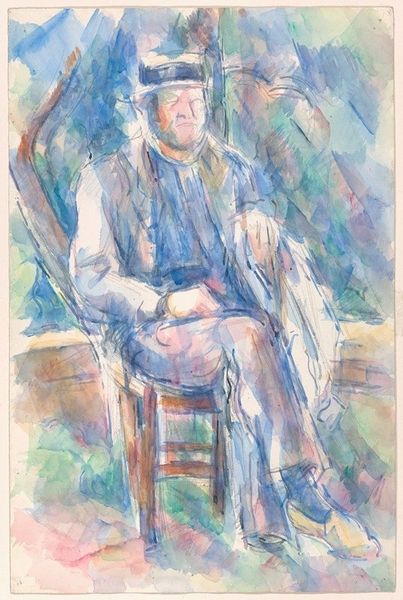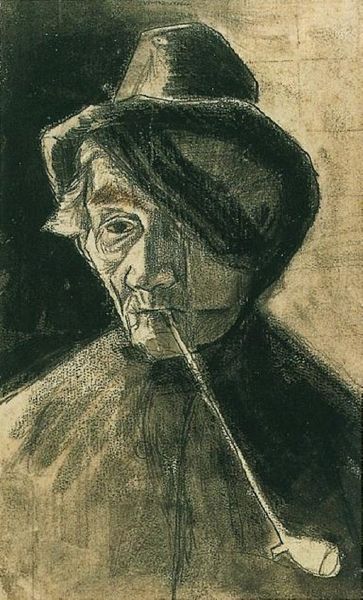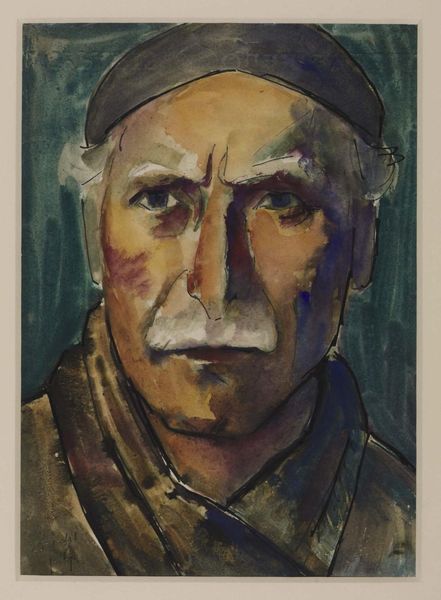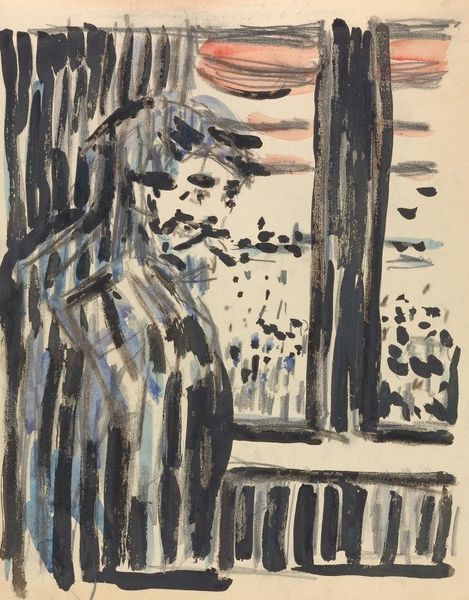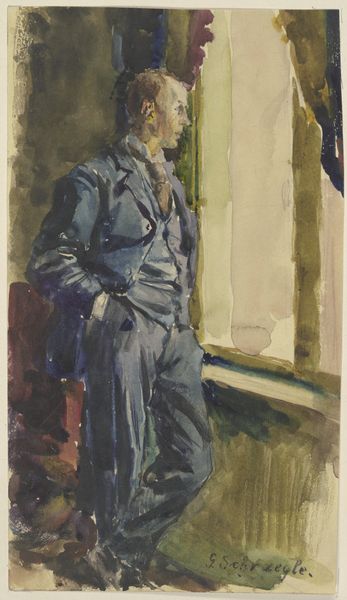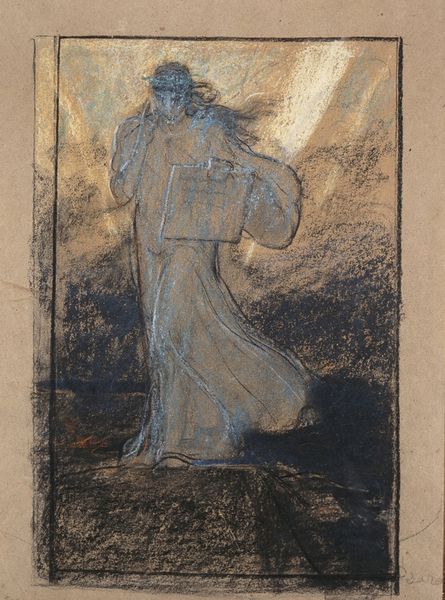
Copyright: Public domain
Editor: This is Julian Fałat’s "Self-Portrait in Winter Coat," a watercolor from 1917. It feels melancholic to me, very muted colors, and the artist’s gaze is so direct. What do you see in this piece? Curator: I see a convergence of personal and cultural symbolism. The winter coat, rendered in blues and greys, isn’t just clothing; it’s a visual marker of a specific time, 1917, a period of immense upheaval and hardship. The gaze holds a world weariness, wouldn't you say? It connects to a broader tradition of the stoic, solitary figure enduring adversity. Editor: So the coat itself and the winter setting have meaning beyond just the literal? Curator: Precisely. The winter landscape, with its almost spectral figures in the background, serves as a metaphor for a landscape of the soul, hardened and perhaps a little desolate. This self-portrait seems less about individual vanity and more about situating oneself within a shared, challenging human experience. The colors even resemble icons that carry spiritual themes! Editor: I see that! Knowing it was created during wartime makes me interpret the almost dream-like figures as civilians displaced. Curator: Exactly! Fałat uses the symbolic language of portraiture to reflect not only his personal state but the collective state of a society grappling with conflict and change. A somber visual statement, full of enduring weight. What does it prompt you to think about, seeing the overall composition? Editor: Thinking about the landscape as an extension of the self, it gives a much wider lens of viewing portraits, thanks! Curator: A worthwhile pursuit! Recognizing those visual and symbolic bridges across time really deepens our understanding of art.
Comments
No comments
Be the first to comment and join the conversation on the ultimate creative platform.
